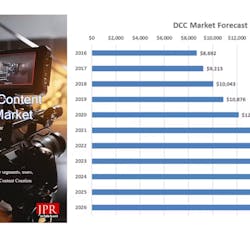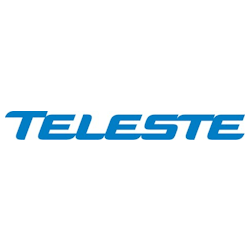NAGRA, a Kudelski Group (SIX:KUD.S) company, in partnership with MTM, an international research and strategy consultancy, released the findings of the U.S. edition of the 2019 Pay TV Innovation Forum. The U.S. report includes data collected during a seminar held in New York earlier this summer with executives representing pay TV providers, broadcasters, OTT services and rights holders. They indicated the challenges, opportunities and priorities that are driving the future of the U.S. pay TV market.
This year's U.S. findings report explores a range of themes and issues, from the future of the U.S. pay TV market to the opportunities in next-generation aggregation, and highlights five key findings:
- 1. The industry is cautiously optimistic about the ability of pay TV providers to adapt. Although many U.S. pay TV executives are broadly optimistic about the future commercial prospects for the industry, others are more cautious, anticipating growing pricing pressures, declining margins for traditional pay TV offerings, a more fragmented distribution environment and growing competition. As the proliferation of new direct-to-consumer (DTC) offerings and next-generation streaming platforms, as well as pirate OTT streaming services, puts further pressure on traditional packages and approaches, the main priority for pay TV providers will be to re-address their role as aggregators and re-invent packages to better reach younger customers.
- 2. OTT services are a challenge, but there are uncertainties about their impact. Many executives see OTT offerings as simply another category of content offering to be aggregated and offered to subscribers on pay TV platforms. Others argue that Disney+, in a competitively-priced discounted bundle with Hulu and ESPN+, could represent an "existential threat" to traditional pay TV packages. However, many industry participants remain uncertain about whether all of the new offerings will succeed as standalone propositions as the cost of subscribing to multiple DTC OTT services could make some pay TV packages look like an increasingly good value.
- 3. Pay TV package restructuring is driving content providers to adapt distribution strategies. Industry participants widely expect traditional pay TV packages to be radically re-structured - with fewer linear channels and a more diverse range of prices and packages. This includes bring-your-own-device offerings targeted at smart TV owners and sell-through models similar to Amazon's Prime Video Channels.
- 4. The industry is approaching peak investment in content. Looking forward, many executives believe that the industry is approaching the point of peak investment in content, with growing concerns that too many shows are being produced. For content providers, the main priority for the next few years will be to manage the transition to a more diverse distribution environment - launching new DTC offerings and developing new revenue streams, while protecting existing revenues from affiliates, advertising and program sales.
- 5. Connected platforms are creating opportunities for new entrants and aggregators. The range of distribution opportunities opening up to content providers and OTT services is growing rapidly, making it easier for new entrants to grow their footprints and attract new subscribers. However, some believe that the growth of the major streaming platforms will slow in the coming years, as pay TV providers re-invent their offerings and other streaming platforms launch, fragmenting the market. Others argue that the steady growth in adoption of connected platforms, smart TVs and Roku devices could usher in a new wave of gatekeepers and aggregators. At the same time, the growing connectivity might be a double-edged sword when it comes to content piracy as it appears be shifting the focus of pirates toward OTT video services.
"The U.S. pay TV market continues to face a period of change," said Jon Watts, managing partner at MTM. "We're seeing a more complex, competitive market emerge rapidly, with a far more diverse range of pay TV offerings and strategies on display. The U.S. executives participating in this year's Forum remain broadly optimistic about the prospects for the pay TV industry in the 2020s, but they are also clear that business-as-usual is no longer sufficient. Most major U.S. companies are well advanced in developing their strategies, placing big bets on the future and rolling out new offerings - but there are lots of uncertainties ahead. The decade ahead promises to be a fascinating period for the industry."
The 2019 U.S. findings report is part of the Pay TV Innovation Forum, a global research program for senior executives designed to explore the most significant challenges and opportunities facing the pay TV and content industries. Hosted by NAGRA and chaired by MTM, U.S. seminar participants included executives from A&E Networks, Altice USA, AMC Networks, AT&T, Charter, DISH Network, Disney, fuboTV, HBO, Showtime, Verizon, Viacom and others.





